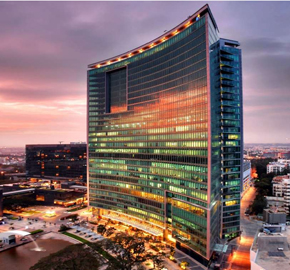
Realising the potential of urban cities in the country’s economic development, India is already in the process of making them ‘Smart’ and it seems to have been accepted that a Smart City requires a well chalked out plan to make it actually work, says Sameer Sharma, Additional Secretary (Smart Cities), Ministry of Urban Development Government of India, in conversation with Elets News Network (ENN).

Additional Secretary (Smart Cities)
Ministry of Urban Development
Government of India
According to Sharma, in the next 10-15 years, India’s urban cities will contribute 75 to 80 per cent of the Gross Domestic Product (GDP), with their population rising by 50 per cent.
“In the future, the prime drivers of the country will be cities. This does not imply that we should ignore the villages but the focus will be on cities,” said Additional Secretary.

“In future, the prime drivers of the country will be cities. This does not imply that we should ignore the villages but the focus will be on cities.”
Speaking at the Elets Urban Development Summit held recently in Hyderabad, he said “Urban areas will determine the way and amount of poverty reduction that can be accomplished. A city has to develop its own pathway”.

Laying a roadmap for Smart Cities, Sharma mentioned about three important layers. The first one is core infrastructure of the cities which includes water, sewerage, transport etc.
The second layer he talked about was IT-based smart solutions and the third one is finding areas which can be made livable.
“When a woman is molested, we use the camera to find out the molester. The purpose of the camera is to prevent it in the first place. There has to be an analysis to develop a response system which is called a smart solution,” he said.
 Talking about ‘Smart’ health, he said that a healthcare system becomes smart only “when everybody is able to get advice on health while sitting in the remote part of the country.”
Talking about ‘Smart’ health, he said that a healthcare system becomes smart only “when everybody is able to get advice on health while sitting in the remote part of the country.”
He tells Jan-Aushadhi scheme provides quality medicines available at affordable prices for all, particularly to the poor and disadvantaged, through exclusive outlets.
“For diagnostics of poor patients, there is a hub and spoke model where hub is the district hospital and spoke is the diagnostic centres.”
Be a part of Elets Collaborative Initiatives. Join Us for Upcoming Events and explore business opportunities. Like us on Facebook , connect with us on LinkedIn and follow us on Twitter, Instagram.











